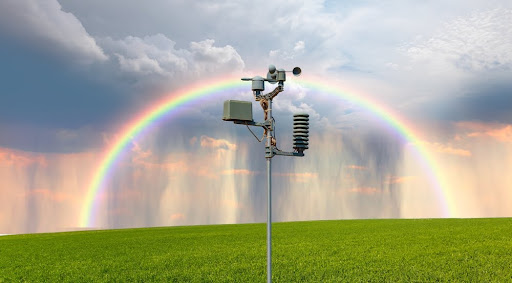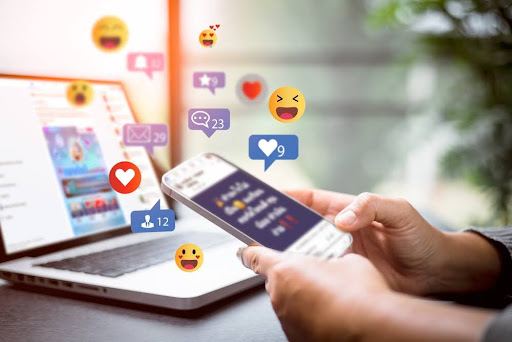Update: This article was last updated on 23rd December 2024 to reflect the accuracy and up-to-date information on the page
Summer break is an excellent time for anyone to pursue their interests and new hobbies. If you are interested in the study of patterns and trends, the summer break is the perfect time to develop your skills in data and analytics. .
To get you started, here are 5 fun data science projects you can tackle during the summer break to keep your mind engaged and your skills sharp.
5 Fun and Interactive Data Science Projects for Kids
1. Analyze Your Favorite Sports Team’s Performance
Who’s going to win the next match?
Collecting and analyzing data on your favorite sports team’s performance can be a very good way to enhance data science skills. This is one of the many engaging data science projects for kids and a great way for students to explore data analytics projects. Begin by collecting data on the team’s performance over time, such as the number of wins and losses, points scored, and stats on individual players. This type of analysis introduces concepts from data science for kids and aligns with what you might learn in a data science course for kids.
Once you’ve gathered your data, you can use tools like Excel or Google Sheets to analyze it. Using these tools, you can create charts and graphs to visualize data and identify patterns and insights. For instance, you could create a line chart to track the team’s performance throughout a season or a bar chart to compare the performance of different players. These are some good data science projects to help students understand how big data projects for students can lead to actionable insights. Through such data, you will identify regions of doing good and areas to improve upon in your team. Such activities of data science make learning exciting and fun while developing analytical skills.
2. Weather Forecasting

Will you be having your birthday party outdoors next week?
But before you dive into it, remember that weather forecasting is a complex science, and even professionals fail to predict the weather sometimes.
The one among these data science projects which interest the students is related to the weather analysis and would require the data regarding weather for your town or city. This kind of data can include temperatures, humidity, wind speeds, and precipitation. Basic collection and processing of such data-related student analytics projects are involved with this kind of assignment, which can be attained by acquiring data from agencies such as the National Weather Service or online weather APIs.
Once you have collected the data, you can use machine learning algorithms to build a predictive model to forecast the weather for the upcoming week or month. You can use Tools like Python or R to create the predictive model. These tools have a wide range of machine-learning libraries that can help with the analysis and prediction of weather data. Such tools are often introduced in data science course for kids to make learning practical and engaging.
Tools such as Python or R can be used to create the predictive model. These tools have a wide range of machine-learning libraries that can help with the analysis and prediction of weather data.
To build a predictive model, you’ll need to clean and preprocess the data and then use algorithms like regression or decision trees to train the model. Once the model is trained, you can use it to predict future weather patterns. This type of project is not only a good data science project but also a fun data science project that encourages creativity and analytical thinking.
Just like data science for kids used for predictive weather, such a big data project can help attract and stimulate interests among students and instill them with practical skills during learning. Even conducting various activities related to data science, such as making predictive weather forecasts, would introduce analytics usage for students in problems and decision-making processes.
3. Sentiment Analysis of Social Media Posts

Will this reel go viral?
This is a project to analyze posts about your favorite movie or the current trending topic you must gather data from social media platforms like Twitter, Facebook, or Instagram. For this purpose, you would use web scraping tools or APIs to gather the posts concerning your area of interest.
Once the data has been gathered, NLP techniques can be employed for sentiment analysis, which can also serve as a fun activity in introducing data science projects for students. These are apt data analytics projects for learning among students and may be used as data science for kids or a data science course for kids by dumbing down the techniques.
There are many techniques for doing sentiment analysis, some of which include bag-of-words models, sentiment lexicons, and machine learning models. It is one of the nice data science projects that provides both technical skill learning along with fun data science projects to promote creativity. Once the sentiment analysis is done, you can represent the results using charts and graphs. This makes it one of the most interesting data science projects to help students and kids understand the emotions and opinions of people on a given topic.
For advanced topics, this project can be scaled into big data projects for students, where deeper insights and opportunities to learn are involved. By taking up real-world problems, students can turn this into one of the best data science projects to develop their analytical and technical skills effectively.
4. Analyzing Music Trends

What will the top 10 charts be in the coming weeks?
It aims at streaming data from popular music streaming sites such as Spotify or Last.fm in an attempt to identify trends and patterns in the listening behavior of people. You can use tools like the Spotify API or Last.fm API to get data on the most popular songs, artists, or genres, as well as on the listening habits of people, such as the time of day or day of the week when they listen to music. This is an example of data science projects for students and can also be a great starting point for data science for kids.
You can clean and preprocess the data using data analysis tools such as Excel or Python. Then, you can use data visualization tools such as Tableau or Matplotlib to create graphs and charts to visualize the data. These interesting data science projects will help young learners or beginners understand complex datasets in a fun and engaging way.
These visualizations will allow you to identify trends and patterns in listening to music, such as what kind of genres are the most popular or what kind of songs are trending. Such good data science projects are sure to inspire creativity and encourage problem-solving skills.
You can also use statistical techniques, like regression analysis, to find the variables of influence on music trends: listeners’ age or gender, for example. It might be included in a course on data science for kids, as a means to show them how analytics are applied in the real world. It’s an entertaining data science project combining creativity with technical skills.
This activity can also fall under the data science activities and data analytics projects for students, which allow them to engage in using tools and techniques to solve real-world problems. The big data projects for students like this provide insights into the music industry and help develop an understanding of the preferences of different listener groups, hence making it an excellent learning opportunity.
5. Predicting Movie Box Office Success

Will the movies that are scheduled to release soon be a flop, hit, or super-hit?
This project requires collecting data related to past movies and how they fared in the box office, such as budget, genre, and ratings, and applying machine learning algorithms to predict which upcoming movies will be a hit or not. This is an excellent example of fun data science projects that students can try.
To get started, you must gather data on past movies from sources like IMDb, Box Office Mojo, or The Numbers. Such data analytics projects for students help them gain practical skills. After cleaning and preprocessing the data, use machine learning algorithms like linear regression or decision trees to build a predictive model for the box office success of upcoming movies. These interesting data science projects can also inspire kids to explore data science for kids programs or even enroll in a data science course for kids.
Ensure that the model is trained on the data of past movies and tested on a set of validation data to ensure its accuracy. Big data projects for students like this one are both educational and engaging, and using machine learning algorithms to predict the box office success of upcoming movies.
Conclusion
Data science for kids explores the fun world of data and analytics and can introduce kids to this quite complex domain in a step-by-step manner. They might actually make a living out of it if appropriately approached by interesting projects with proper mentorship.
Moonpreneur is on a mission to disrupt traditional education and future-proof the next generation with holistic learning solutions. Its Innovator Program is building tomorrow’s workforce by training students in AI/ML, Robotics, Coding, IoT, and Apps, enabling entrepreneurship through experiential learning.


























Can anyone suggest a girl be a data scientist?
Choosing a career in data science is an excellent option for women, though starting out may seem challenging. The encouraging news is that women are making significant progress in this field for various reasons.
How do scientists use data for kids?
Researchers employ data to acquire insights and draw conclusions. Frequently, scientists utilize graphs or tables as visual aids to present their data and research discoveries. If you’re curious to delve deeper into the methods scientists employ to collect and utilize data, explore our Data Domain.
Can my 13 year old son learn data science?
If your child is between the ages of 12 and 14 and has a keen interest in coding, this course is an ideal fit. It is designed to teach the fundamentals of data science. Enroll your child today to provide them with the opportunity to learn from top-notch educators.